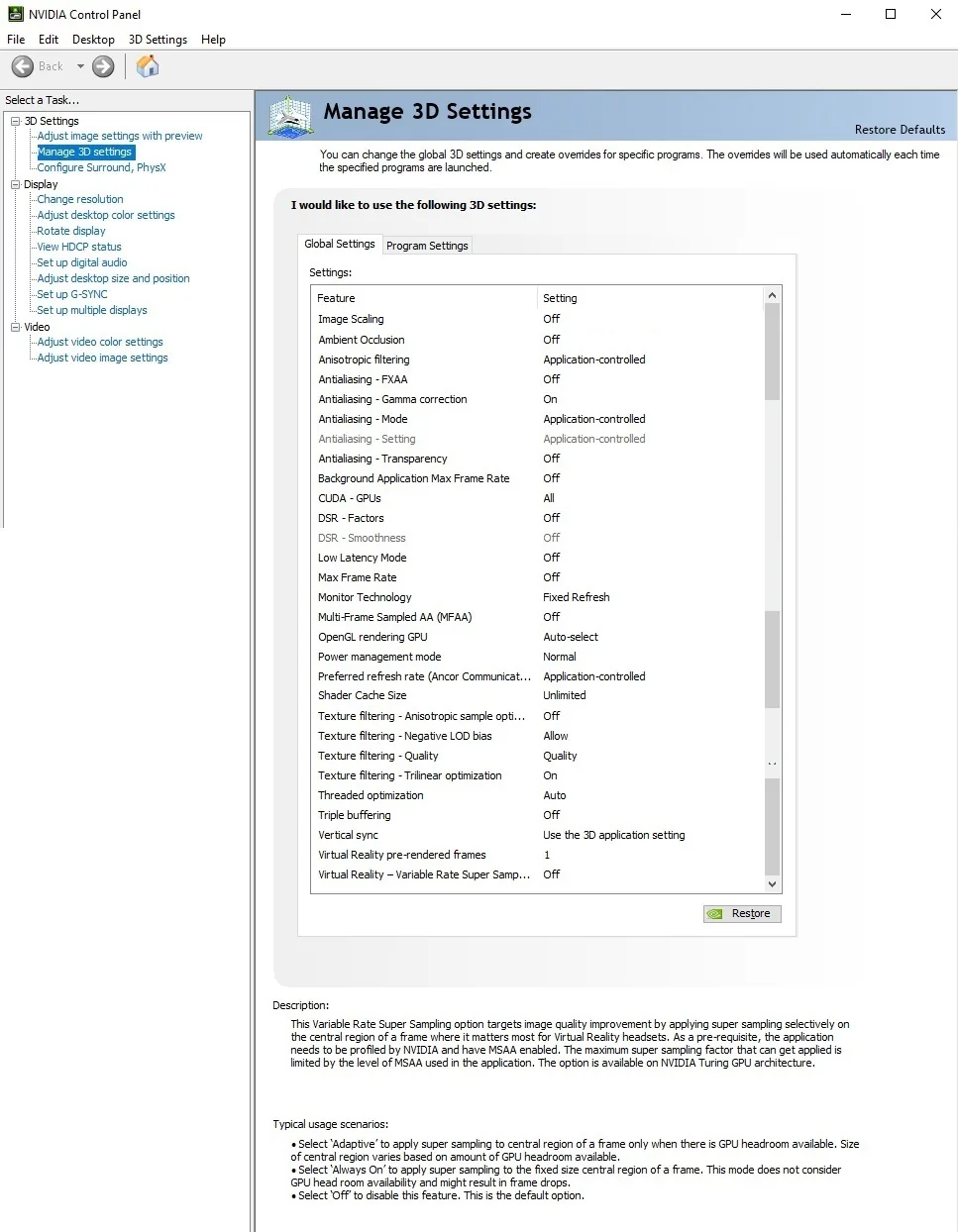The $299 RTX 4060 Gaming Performance Review – Ada Lovelace upgrade for 60 Series Owners
Nvidia has been no stranger to controversy with their 40 series of Ada Lovelace GPUs. Gamer’s are hyper-focused on a lack of VRAM and pricing structures for the new offering. With that in mind, we recently received an ASUS RTX 4060 DUAL model from Nvidia and we have been testing it for the past week. There is no Founders Edition per Nvidia, and the RTX 4060 will be available from partners at an MSRP of $299 starting tomorrow. While a lower price would have provided some market disruption, the RTX 4060 with its current feature set and architecture is a perfect upgrade for users that may still own a RTX 2060 or a GTX 1060.
According to recent Steam Hardware Surveys, around 77% of users still play on 1080p and older cards so this market will always be huge for both Nvidia and AMD. MSRP is the same as previous entries like the RTX 2060 but it may be hard to reach in the current market. There are still some RTX 2060 series entries at $279. Price is everything and we would have loved a lower price point by at least $30-50 which likely would have made this one of the most popular releases in recent memory for gamers that want access to AV1 encoding, Frame Generation and DLSS 3, and a much better RT experience.
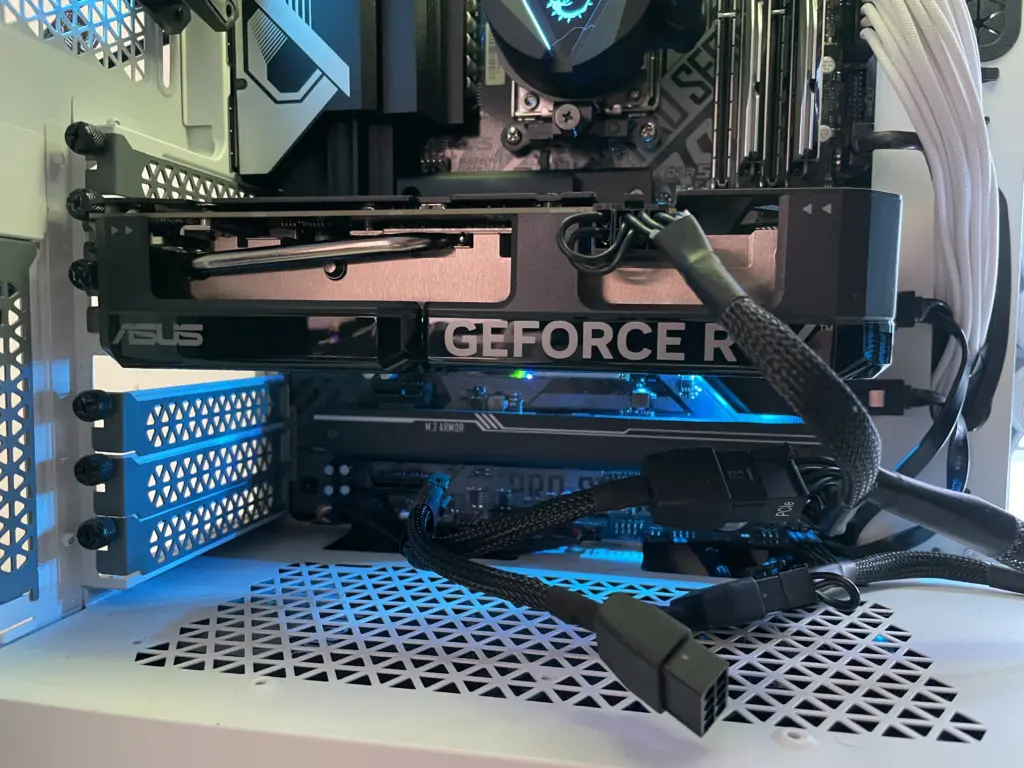
While pricing feels high, especially for 8GB, The RTX 4060 is a welcome upgrade to older cards as it arrives with multiple new features, including DLSS 3, which brings an incredible performance uplift. The RTX 4060 comes with Nvidia’s newest RT and Tensor Cores that are more powerful than previous generation GPUs and support new features including Shader Execution Reordering (SER) and Nvidia DLSS 3 technology, all while using less power than the RTX 2060.
Generationally this is a massive jump at a much lower power consumption rate as the ASUS DUAL RTX 4060 uses just 115 watts. The new NVIDIA Ada Lovelace GPU Architecture also features a new SM design that runs at dramatically higher clock speeds and significantly increases the capacity of the L2 cache on the RTX 4060 to a whopping 24MB. Nvidia frequently mentioned this cache as a powerful tool to help the 8GB of VRAM run more efficiently and powerful. We review just how much later in our benches, but regardless more VRAM would have been welcome.
As mentioned, the RTX 4060 supports AV1 encoding which in and of itself is a good enough reason to upgrade from older generations of cards if you are a broadcaster, the quality leap of your content will dramatically increase.
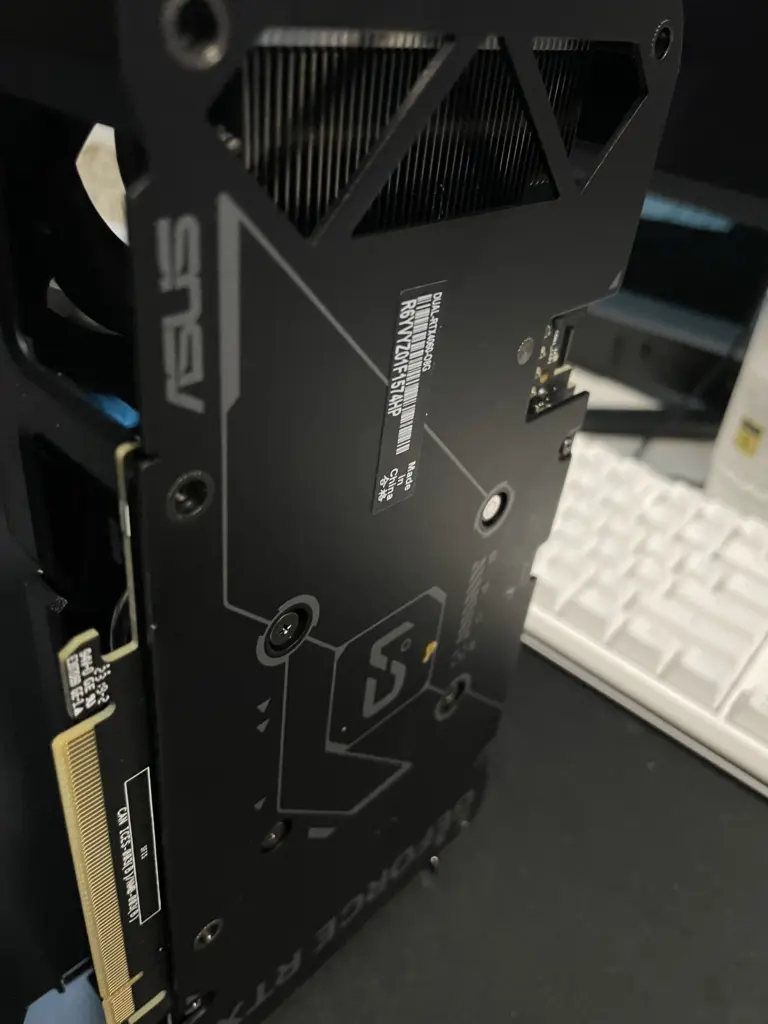
The RTX 4060 Feature set
The elephant in the room for most any will be being bound by the RTX 4060 8GB of VRAM capacity and the $299 price point. “Modern Gaming” might be pushing games out on PC in poor states, but mostly games like Forza 5 and Doom run amazing and proves these cards can run these games well. Nvidia cannot wave a wand to fix a bad PC port, but for $299 gamers on a budget may balk at the lack of future proofing. We suggest waiting for the RTX 4060 Ti’s 16GB benchmarks to arrive if you are at all on the fence, however if you are a 1080p gamer and the feature set is at all enticing to you, this is a great upgrade if you are still on a RTX 2060 or lower if you can find one at MSRP.
Nvidia’s leap in games with DLSS 3 is undeniably incredible and there is enough of an incremental upgrade for those on older generations to think twice. Now we have over 50 games announced with DLSS 3 and more on the way.
Comparing generation-to-generation there is a giant leap thanks to TGP/power improvements. We also have to consider AMD’s offerings at this price point even though at the moment, FSR 2.0 is well behind DLSS 3 in performance. The value proposition in comparison to the rest of the rather expensive 40 series is obvious, but the RTX 4060 may not offer the raw GPU power upgrade many want to see especially for the high asking price, even if it matches previous generations. You can still get a RX 3060 with 12GB of GDDR6 for $289, for most gamers who do not care about the current feature set the RTX 4060 begins to feel like it should be in the xx50 class.

However, we do have to note one key innovation that’s been added to the memory subsystem in Ada GPU’s is its larger L2 cache. This new memory subsystem is a dramatic improvement over the previous generation.
When compared to a 128-bit Ampere GPU, the Ada L2 cache architecture delivers a 16x increase in capacity. In addition, the L2 cache bandwidth in Ada GPUs has been significantly increased versus prior GPUs. This allows more data to be transferred between the cores and the L2 cache as quickly as possible.
Ada’s larger L2 cache results in significantly more L2 cache hits, while also reducing traffic across the memory bus.

This change, per Nvidia, resulted in the performance of the 24MB L2 cache reducing memory bus traffic from 40% to 60% over the performance of a 2MB L2 cache. This translates to massive increases in effective performance. An Ada GPU with 288 GB/sec of peak memory bandwidth is the equivalent of an Ampere GPU that needed 554 GB/Sec.

Couple this improvement with DLSS 3, which has the fastest adoption of any of Nvidia’s technologies to date and you will notice why we do encourage you to take a look at your options if you are on older hardware as this is fantastic upgrade, especially from a 20 series.
The ASUS DUAL RTX 4060 Board
The GeForce RTX 4060 graphics card incorporates many of the new design elements that are also found on NVIDIA’s RTX 4070 Ti, RTX 4080, and RTX 4090 Founders Edition boards. The ASUS DUAL RTX 4060 card features a dual bios, dual fan design that looks great and compact compared to its big brothers.
Our Plan
Nvidia is in an interesting spot with the RTX 4060, it decided to release the 8GB for the RTX 4060 Ti model first so let’s see how well it performs in comparison.
For this review, we are planning to benchmark the RTX 4080, RTX 4070 Ti, RTX 4070, RTX 4060 Ti, RTX 3070, and RTX 3080 within our test build at 1440p and 1080p.

The NVIDIA Ada Lovelace GPU Architecture also features a new SM design that runs at dramatically higher clock speeds and significantly increases the capacity of the L2 cache on the RTX 4060 to 24MB versus the 3MB L2 cache that was available on the RTX 3060. Increasing the size of the L2 cache improves performance, reduces latency, and increases power efficiency, as data accesses can remain on-chip rather than having to go out across the GPU’s memory interface to external graphics memory

We want to test if it really can hold up with 8GB of VRAM to deliver a potential amazing value proposition compared to the RTX 3060.
Features & Specifications
The RTX 4060 technological innovations include:
- New Streaming Multiprocessors (SM) – The new SM delivers up to 2x performance and power efficiency
- 4th Generation Tensor Cores and Optical Flow – Enable and accelerate transformative AI
technologies, including the new frame rate multiplying Nvidia DLSS 3 - 3rd Generation RT Cores – Up to 2x ray tracing performance, delivering incredibly detailed
virtual worlds like never before - Shader Execution Reordering (SER) – SER improves ray tracing operations by 2x, boosting FPS up to 44% in Cyberpunk with RT: Overdrive Mode
- DLSS 3 – A revolutionary breakthrough in AI-powered graphics that massively boosts
performance using AI to generate additional high-quality frames - Nvidia Studio – Unmatched performance in 3D rendering, video editing, and live streaming
- AV1 Encoders – The 8th generation Nvidia Encoder (NVENC) with AV1 is 40% more efficient than H.264, enabling new possibilities for streamers, broadcasters, and video callers
Key Features from Nvidia
- Dedicated 3rd generation ray tracing cores (46)
- Dedicated 4th generation Tensor cores (184)
- Nvidia DLSS 3 support
- Game Ready and Nvidia Studio drivers
- Nvidia GeForce Experience
- Nvidia Broadcast
- Nvidia G-Sync
- Nvidia GPU Boost
- PCI Express Gen 4
- Microsoft DirectX 12 Ultimate support
- Support for Vulkan RT APIs, Vulkan 1.3, and OpenGL 4.6
- HDCP 2.3 support
- DisplayPort 1.4 support: up to 4K at 240Hz or 8K at 60Hz with DSC, HDR
- HDMI 2.1 support: up to 4K 240Hz, Gaming VRR, HDR
Specifications
Nvidia’s MSRP price for RTX 4060 Ti GPU is $399, a GPU made for 1080p.
Here is the RTX 4060 in GPU-Z:

According to GPU-Z, the RTX 4060 has the default GPU clock of 1830 compared to the RTX 4060 Ti’s 2310 MHz with a boost of 2505MHz vs 2525MHz for the Ti.
Below is the advanced general information on the RTX 4060 as reported by the GPU-Z tool.

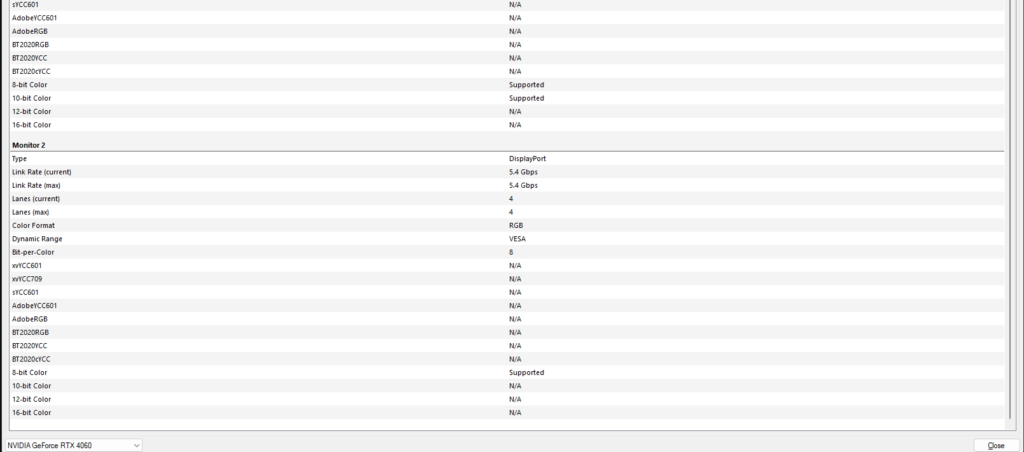
As you can see from the GPU-Z screenshots, you can even increase both power and temperature limits to some degree, and while there is little room for overclocking, but there is some additional potential performance for gamers looking to get more from their builds but gains might be nominal at best.
Power Comparison | RTX 2060 Super | RTX 4060 | RTX 4060 Ti | |
|---|---|---|---|---|
| Idle (W) | 10W | 7W | 7W | |
| Video Playback (W) | 15W | 11W | 13W | |
| Average Gaming (W) | 168W | 110W | 140W | |
| TGP (W) | 175W | 115W | 160W |
| Power Comparison | RTX 2060 | RTX 3060 | RTX 4060 |
|---|---|---|---|
| Idle (W) | 8W | 8W | 7W |
| Video Playback (W) | 14W | 13W | 11W |
| Average Gaming (W) | 138W | 170W | 110W |
| TGP (W) | 160W | 170W | 115W |
A Closer Look at the ASUS DUAL RTX 4060
Packaging
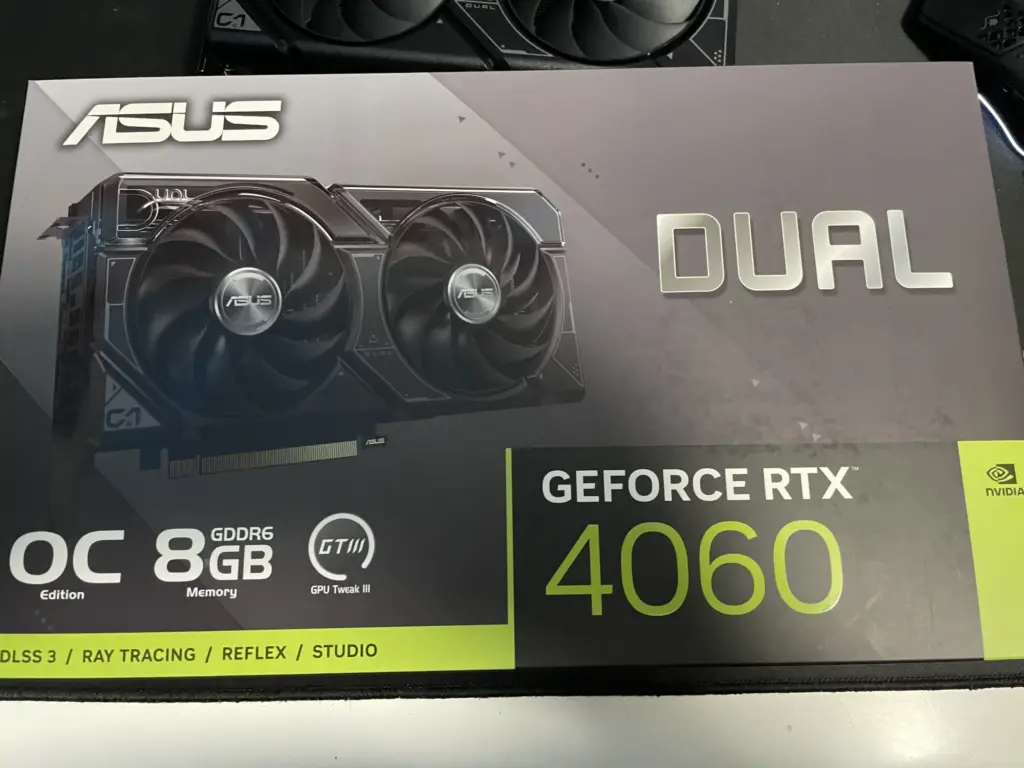
The box cover highlights a sleek approach to the packaging. I am a huge fan of the presentation Nvidia has been providing for its FE line so while this is not as flashy its still a classic GPU unboxing experience.
Accessories
As we open the box, it folds out beautifully displaying the brand new RTX 4060. Beneath the card is not much, this GPU does not feature a (12VHPWR) PCIe connector and instead uses the classic PCI-E connector. There is minimal documentation included with most of the important packaging centered around the GPU itself.
The Card
The RTX 4060 is a small dual-fan graphics card with classic RTX aesthetics that are still refined and look great. There is no RGB on the RTX 4060.
The IO panel connectors are 3 DisplayPorts and 1 HDMI connection.

Inside the case
The RTX 4060 looks subtle and classic inside a case. I would personally love to build an SFF PC using this card. It is the perfect size offering a powerful small gaming rig at a reasonable price compared to the sky-high prices we have seen these last few years. We like that it is small and discrete but some may not like the unlit logo
Next is our testing configuration, methodology, and more.
Our Benchmarking PC
We benchmark using FrameView on a recent install of Windows 11 Pro Edition 22H2, at 3440×1440 using an AMD Ryzen 7800x3d with stock clocks and 32GB of DDR5 G.Skill Trident Z 6000MHz memory on an Asrock X670E Pro RS motherboard. All games and benchmarks are the latest versions, and we use the latest GeForce 536.20 press drivers for our testing. The games tested, display driver, settings, and hardware are identical except for the GPUs we compare.

Let’s unbox and take a closer look at this graphics card.
Test Configuration
Benching Methodology
Test Configuration – Hardware
- AMD Ryzen 7800x3d (stock settings)
- Asrock X670E PRO RS motherboard (AMD AM5 chipset, v 1.07 BIOS)
- G.Skill Trident Z 32GB DDR5 (2×16GB, dual-channel at 6000 MHz XMP)
- RTX 4060 Ti 8GB, stock clocks; supplied by Nvidia
- RTX 4060 Ti 8GB, stock clocks; supplied by Nvidia
- RTX 4070 FE 12GB, stock clocks; supplied by Nvidia
- ASUS TUF GAMING GeForce RTX 4070 Ti OC Edition 12GB, stock clocks; supplied by Nvidia
- RTX 3080 FE 10GB, stock clocks
- RTX 3070 FE, stock clocks
- 1 x TeamGroup 1 TB NVMe M.2 SSD
- 2 x WD Blue 1TB SATA SSD
- Corsair RM850x, 850W 80PLUS Gold power supply unit
- ALIENWARE 34″ CURVED QD-OLED GAMING MONITOR – AW3423DWF
Test Configuration – Software
- NVIDIA GeForce 536.20 game-ready press drivers; ‘Prefer maximum performance’ (on a per-game profile basis); Shader Cache Size ‘Unlimited’ (globally); fixed refresh rate (globally).
- We enable Resizable BAR
- ‘V-Sync application controlled’ in the control panel; V-Sync off in-game.
- We note and specify the main in-game display, graphics, AA, and scaling settings in the performance summary charts.
- Windows 11 64-bit Pro edition, latest updates v22H2, High-performance power plan, HAGS & Game Mode are enabled, Game DVR & Game Bar features off, Control Flow Guard (CFG) off on a per-game basis, Hypervisor and Virtualization-based security are disabled.
- We do not install Asrock tools.
- Latest DirectX
- All games are patched to their latest versions at the time of publication.
- 3DMark suite, the latest version
- RivaTuner Statistics Server (RTSS), the latest version
- FrameView, the latest version
- Display Driver Uninstaller (DDU), the latest version; always uninstall drivers using DDU in safe mode, clean, and restart.
- ISLC (Purge Standby List) before each benchmark.
GeForce Driver Suite-related
- We use DCH Game Ready drivers.
- The display driver is installed.
- We install the latest version of PhysX.
Hybrid & Non-Synthetic Tests-related
- Single run per test.
Game Benchmarks-related
- We use the corresponding built-in or custom benchmark sequence.
Frametimes Capture
- We use FrameView for capturing frame times and analyzing the relevant performance numbers obtained from each recorded built-in or custom benchmark sequence.
Benchmark Suite:
PC Games
DX11 Games
- Total War: Warhammer III (DX11)
DX12 Games
- Chernoblyte (DX12)
- Call of Duty: Modern Warfare 2 (DX12)
- Cyberpunk 2077 (DX12)
- F1 2022 (DX12)
- Far Cry 6 (DX12)
- Resident Evil 4 (DX12)
- Red Dead Redemption 2(DX12)
- Horizon Zero Dawn (DX12)
- Metro Exodus PC Enhanced Edition (DX12)
- Dirt 5 (DX 12)
Vulkan Games
- DOOM Eternal (VK)
Hybrid Tests (3DMark)
- DLSS Feature Test
- Fire Strike Ultra
- Time Spy
Nvidia Control Panel settings
Here are the global Nvidia Control Panel settings:
Noise, Temperatures, and Power Consumption
Unfortunately, we did not have time to check out the overclocking potential, but temperatures were controlled and the RTX 4060 runs very cool. We never heard the fans come on and they stayed extremely quiet throughout our test runs
The RTX 4060 is quiet, and its fans never spin up at idle, even under a heavy or full load to be irritating or noticeable. When gaming it spins up to full often under very heavy loads – like Resident Evil 4 with all features turned on. It is as silent as the RTX 4070 and RTX 4070 Ti we tested previously.
Nvidia Performance Graphs and information
The biggest selling point for the RTX 4060 at $299 has to be DLSS 3, and AV1 encoding. If you care at all about VRAM, then there are still some great offerings available around this price point and there is a lot going for keeping older generations of card until we see a massive raw performance uplift.
However, we do have that uplift with DLSS as a whole, better RT performance, and less power consumption in the 40 series. This is the gigantic upgrade is some games- even if some purists may not like frame generation – the performance increase and quality retention is simply stunning. On our QD-OLED display, we could barely see any image quality differences but performance increased dramatically and beat older generation cards easily. The price just needs to come down to match the current climate.

Let’s head to the performance charts to compare the graphics performance of the RTX 4060.
Gaming Performance Charts
The NVIDIA Ada Lovelace GPU Architecture also features a new SM design that
runs at dramatically higher clock speeds and significantly increases the capacity of the L2 cache on the RTX 4060 to
24MB versus the 3MB L2 cache that was available on the RTX 3060. Increasing the size of the L2 cache improves
performance, reduces latency, and increases power efficiency, as data accesses can remain on-chip rather than
having to go out across the GPU’s memory interface to external graphics memory
The NVIDIA Ada Lovelace GPU Architecture also features a new SM design that
runs at dramatically higher clock speeds and significantly increases the capacity of the L2 cache on the RTX 4060 to
24MB versus the 3MB L2 cache that was available on the RTX 3060. Increasing the size of the L2 cache improves
performance, reduces latency, and increases power efficiency, as data accesses can remain on-chip rather than
having to go out across the GPU’s memory interface to external graphics memory
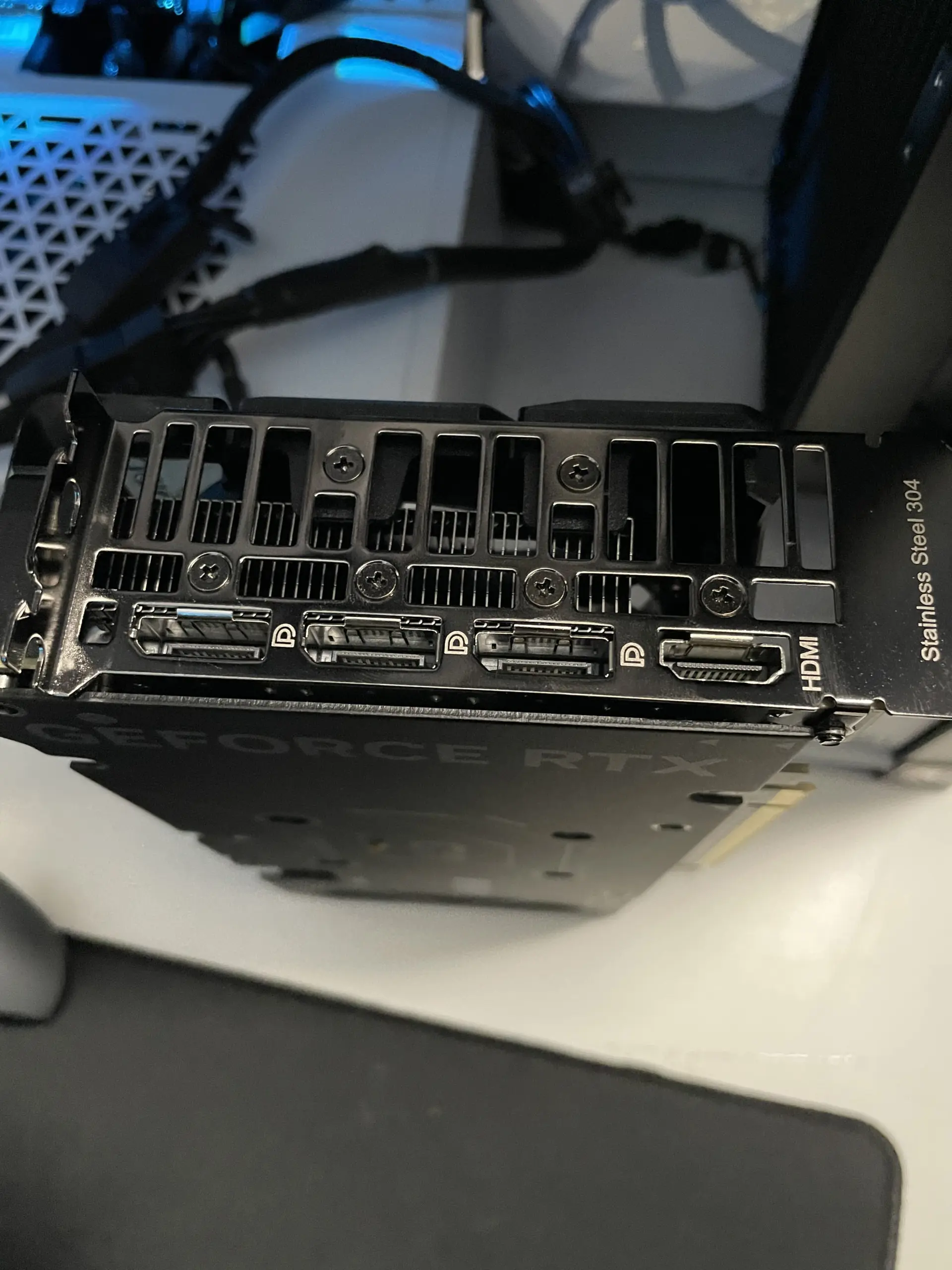
The NVIDIA Ada Lovelace GPU Architecture also features a new SM design that
runs at dramatically higher clock speeds and significantly increases the capacity of the L2 cache on the RTX 4060 to
24MB versus the 3MB L2 cache that was available on the RTX 3060. Increasing the size of the L2 cache improves
performance, reduces latency, and increases power efficiency, as data accesses can remain on-chip rather than
having to go out across the GPU’s memory interface to external graphics memory
The NVIDIA Ada Lovelace GPU Architecture also features a new SM design that
runs at dramatically higher clock speeds and significantly increases the capacity of the L2 cache on the RTX 4060 to
24MB versus the 3MB L2 cache that was available on the RTX 3060. Increasing the size of the L2 cache improves
performance, reduces latency, and increases power efficiency, as data accesses can remain on-chip rather than
having to go out across the GPU’s memory interface to external graphics memory
Main Performance Gaming Summary Charts
Here are BTR’s summary charts of games, six hybrid, and three non-synthetic tests. We note and specify the main in-game display, graphics, AA, and scaling settings on the performance summary charts below. The benches were run at 2560×1440 and 1920×1080.
| 1920x1080p Games | RTX 4060 8GB AVG. FPS |
| Shadow of the Tomb Raider | 93.2 |
| Forza Horizon 5 | 83 |
| Forza Horizon 5 + DLSS 3 Quality | 112.3 |
| Cyberpunk 2077 – Ultra + RT | 29.5 |
| Cyberpunk 2077 + DLSS 2 Quality | 72.4 |
| Cyberpunk 2077 + DLSS 3 Quality + RT | 87.5 |
| Chernoblyte Ultra + RT + DLSS | 49.7 |
| Chernoblyte Ultra + RT | 33.5 |
| F1 2022 Ultra + RT | 79.1 |
| F1 2022 Ultra + RT + DLSS 2/ 3 | 125.2 |
| Resident Evil 4 Ultra | 73.6 |
| Resident Evil 4 Ultra + RT | 70.2 |
| RDR2 – Ultra | 59.7 |
| RDR2 – Ultra + DLSS | 87.1 |
| Dirt 5 Ultra + RT Vehicle Shadows | 94.3 |
| Destiny 2 Ultra | 125.5 |
| COD: MW II Balanced + DLSS | 66.9 |
| Doom E. Ultra N. + RT Off + DLSS Quality | 167.4 |
| Doom E. Ultra N., RT ON + DLSS Quality | 40.2 |
| Doom E. Ultra N., RT OFF + DLSS Off | 78.1 |
| 2560x1440p Games | RTX 4060 8GB AVG FPS |
| Shadow of the Tomb Raider | 90.5 |
| Forza Horizon 5 | 62.2 |
| Forza Horizon 5 + DLSS 3 Quality | 93.2 |
| Cyberpunk 2077 Ultra +RT | 16.8 |
| Cyberpunk 2077 + DLSS 2 Quality | 29.7 |
| Cyberpunk 2077 + DLSS 3 Quality + RT | 42.9 |
| Chernoblyte Ultra + RT + DLSS | 53.5 |
| Chernoblyte Ultra + RT | 37.8 |
| F1 2022 Ultra + RT | 51.5 |
| F1 2022 Ultra + RT + DLSS 2/ 3 | 82.4 |
| Resident Evil 4 Ultra | 60.4 |
| Resident Evil 4 Ultra + RT | 50.1 |
| RDR2 – Ultra | 61.8 |
| RDR2 – Ultra + DLSS | 71.9 |
| Dirt 5 Ultra + RT Vehicle Shadows | 86.2 |
| Call of Duty: MW2 Extreme + DLSS | 65.6 |
| Doom E. Ultra N. + RT Off + DLSS Quality | 185 |
| Doom E. Ultra N., RT ON + DLSS Quality | 135 |
| Doom E. Ultra N., RT OFF + DLSS Off | 158 |
| Destiny 2, Ultra | 108.9 |
| 1920x1080p Games | RTX 3070 | RTX 3080 | RTX 4060 8GB | RTX 4060 Ti 8GB | RTX 4070 | RTX 4071 Ti |
| Shadow of the Tomb Raider | 115 | 157 | 93.2 | 109.5 | 159 | 197 |
| Forza Horizon 5 | 94 | 113 | 83 | 89 | 125 | 153 |
| Forza Horizon 5 + DLSS 3 Quality | 0 | 0 | 112.3 | 119.3 | 161 | 192 |
| Cyberpunk 2077 – Ultra + RT | 49 | 63 | 29.5 | 39.8 | 62 | 84 |
| Cyberpunk 2077 + DLSS 2 Quality | 68 | 89 | 72.4 | 81.4 | 91 | 103 |
| Cyberpunk 2077 + DLSS 3 Quality + RT | 0 | 0 | 87.5 | 97.5 | 117 | 146 |
| Chernoblyte Ultra + RT + DLSS | 56 | 118 | 49.7 | 69.8 | 121 | 152 |
| Chernoblyte Ultra + RT | 33 | 62 | 33.5 | 43.49 | 61 | 76 |
| F1 2022 Ultra + RT | 49 | 53 | 79.1 | 84.1 | 104 | 84 |
| F1 2022 Ultra + DLSS 2/ 3 | 81 | 192 | 125.2 | 139 | 184 | 196 |
| Resident Evil 4 Ultra | 77 | 97 | 73.6 | 76.7 | 101 | 131 |
| Resident Evil 4 Ultra + RT | 73 | 92 | 70.2 | 73.2 | 94 | 116 |
| RDR2 – Ultra | 71 | 83 | 59.7 | 67.2 | 87 | 103 |
| RDR2 – Ultra + DLSS | 83 | 99 | 87.1 | 96.7 | 102 | 138 |
| Dirt 5 Ultra + RT Vehicle Shadows | 80 | 101 | 94.3 | 99.3 | 106 | 120 |
| Call of Duty: MW2 Balanced + DLSS | 96 | 121 | 66.9 | 68.7 | 124 | 142 |
| Total War: Warhammer 3 | 131.2 | 180.2 | 114.6 | 125.3 | 175.6 | 214.8 |
| Doom E. Ultra N. + RT Off + DLSS Quality | 205 | 247 | 167.4 | 178.2 | 266 | 321 |

FireStrike Graphics Score:
3060: 29501
3070: 17807
4060: 25884
4060 Ti: 32678
4070: 42120
Timespy Graphics Score – DX12 1440p:
3060: 8102
3070: 13432
4060: 10908
4060 Ti: 13285
4070: 17881
4070Ti: 22467
Averaged Framerates & Relative GPU Performance
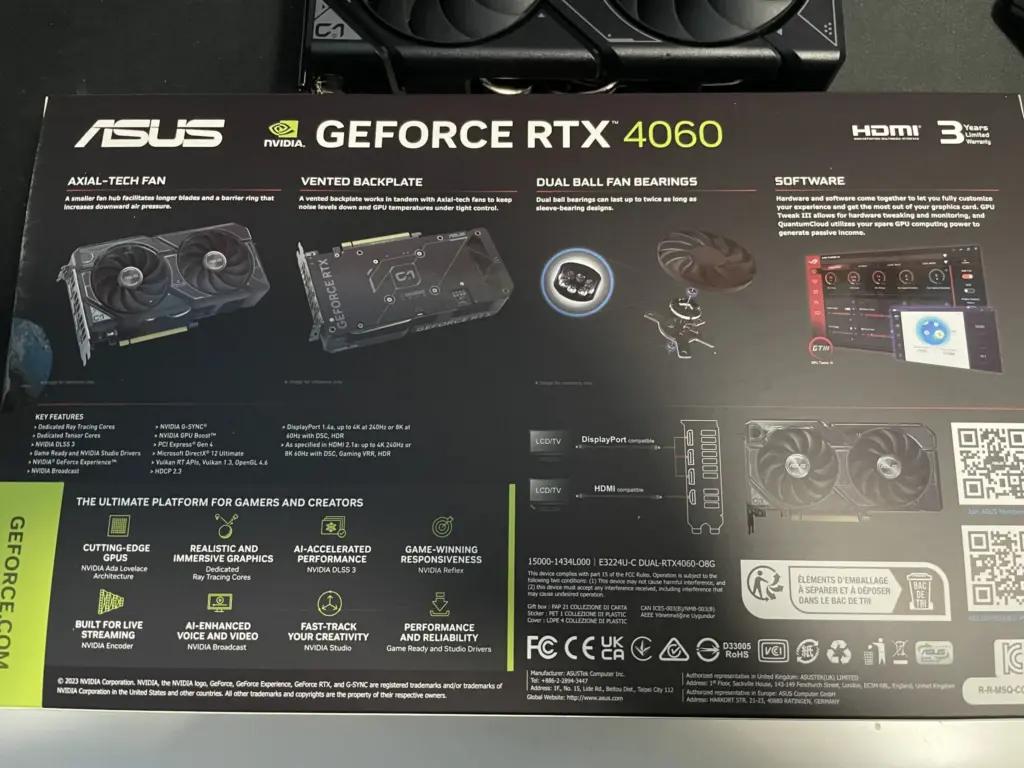
The RTX 4060 is a clear improvement but at a significantly higher buy-in price for not much raw horsepower gain compared to the previous generation. In comparison to the rest of the 40 series lineup, the RTX 4070’s performance is unmatched for budget/value gamers but the RTX 4060 Ti and RTX 4060 sit in limbo while we wait for the 16GB version and its non-Ti counterpart.
Average Frames
The RTX 4060 is not going to be a 4k or 1440p capable card but with some tweaks as mentioned and lower settings it might be *just* fine, but it mostly shines at 1080p. This downgrade sits solely with the VRAM. It is not really outclassing its older generations by the expected margins if we leave our DLSS 3.
Final Thoughts & Verdict
This has been an enjoyable exploration evaluating the new RTX 4060. Overall, it is the best 40 series value for your money currently available but only if you are completely new to PC gaming and want to build a great 1080p machine right now. This is only if you want to enjoy the software offerings of Nvidia, with DLSS 3 and AV1 included in the 40 series, then its obvious that is biggest story here. Pricing is off and Nvidia is relying on its software to entice gamers, and it will for many. However, it truly depends on the games you play. If you are playing games that do not take advantage of DLSS then we suggest waiting or using your budget on an 30 series card with higher amounts of VRAM.
The price – has – to come down in order for to outright recommend this to anyone brand new to PC gaming, or current owners of the previous generation. It is easy, at 1080p, to suggest an upgrade for 10 and 20(60) series owners if you need to upgrade at this time.
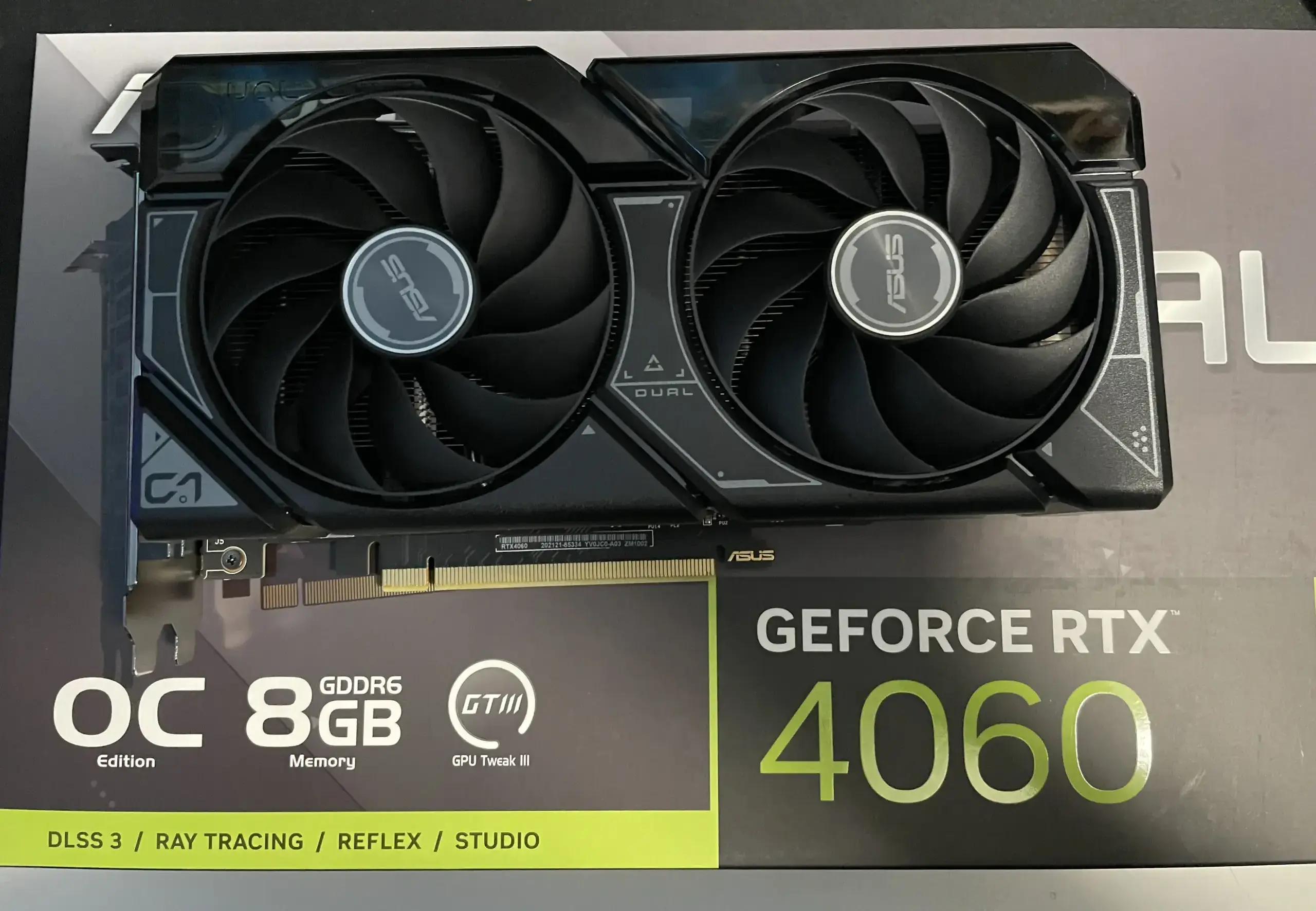
Nvidia’s technology is incredibly exciting but in 4-5 years this card may not hold up to more modern demands if you expect more than it what it was designed for in games that do not support its most impressive features. More VRAM is just around the corner with the 16GB model so you have to discuss whether that price increase is worth the wait.
Games like RE 4 and MW2 were always either too close for comfort or much beyond the VRAM limit at max graphics and we had to lower some settings to get it to run a simple benchmark. We had some struggles at 1440p. The RTX 3060 Ti is significantly better at 1440p as well as the AMD RTX 6700XT. 8GB of VRAM 100% is enough for games today – but the way the industry is headed currently that may not stand the test of time.
However, when Nvidia is involved and DLSS 2/3 makes the RTX 4060 steadily pull ahead of previous generations and even makes some games playable at 1440p. This is amazing technology and it shows its worth immediately whenever enabled. The RTX 4060 is a fairly capable GPU that is going to struggle with its current price point in the market.
We do implore you to look at our upcoming DLSS 3 comparison of the current generation. This technology is finally allowing Nvidia to realize the dream that has been ray tracing. We can now maintain great performance while having the full suite of RTX features on an mid-level card. Safe to say, we like the RTX 4060 for multi-generational upgrades. When this card comes down in price in the future it is going to be a fantastic offering. The RTX 4060 will be available from partners at an MSRP of $299 starting tomorrow
–Happy gaming!
